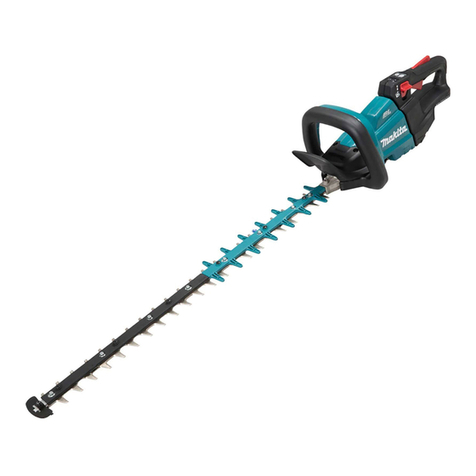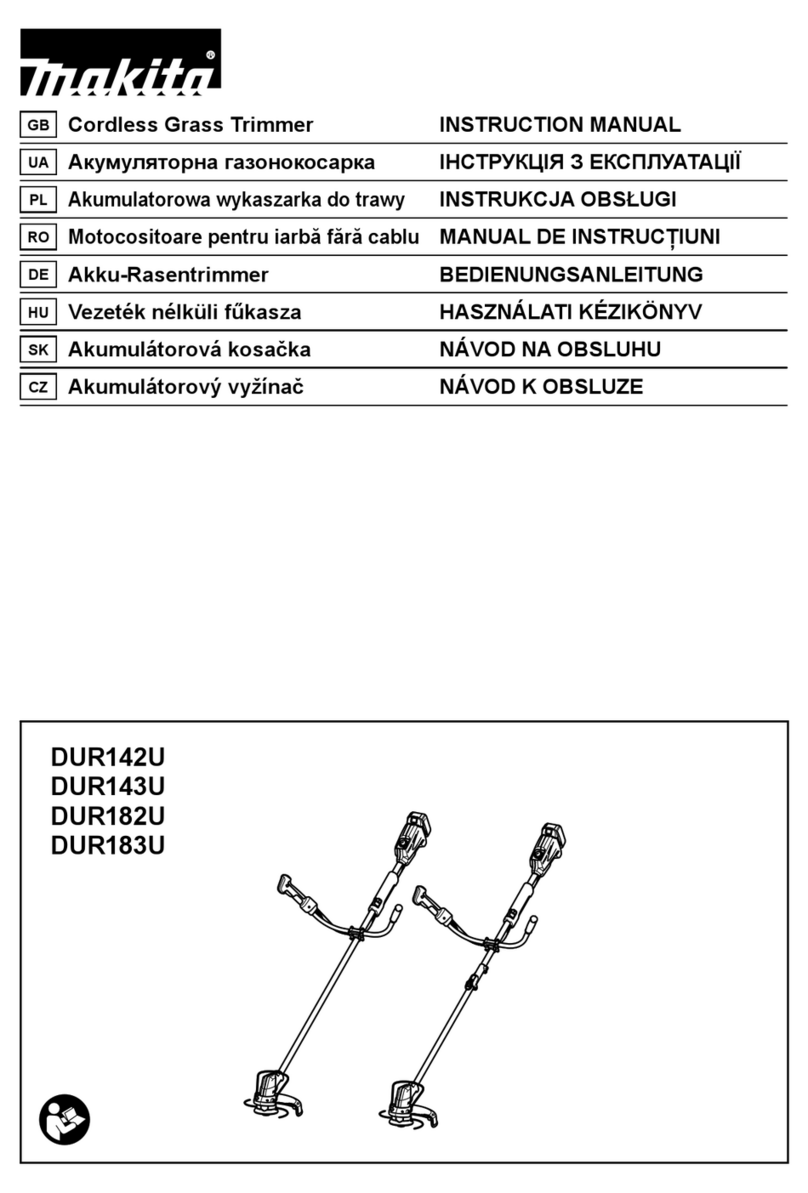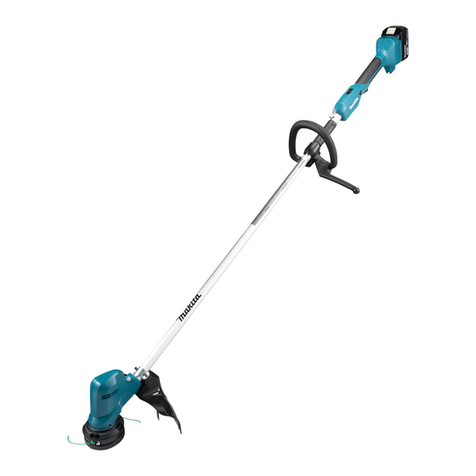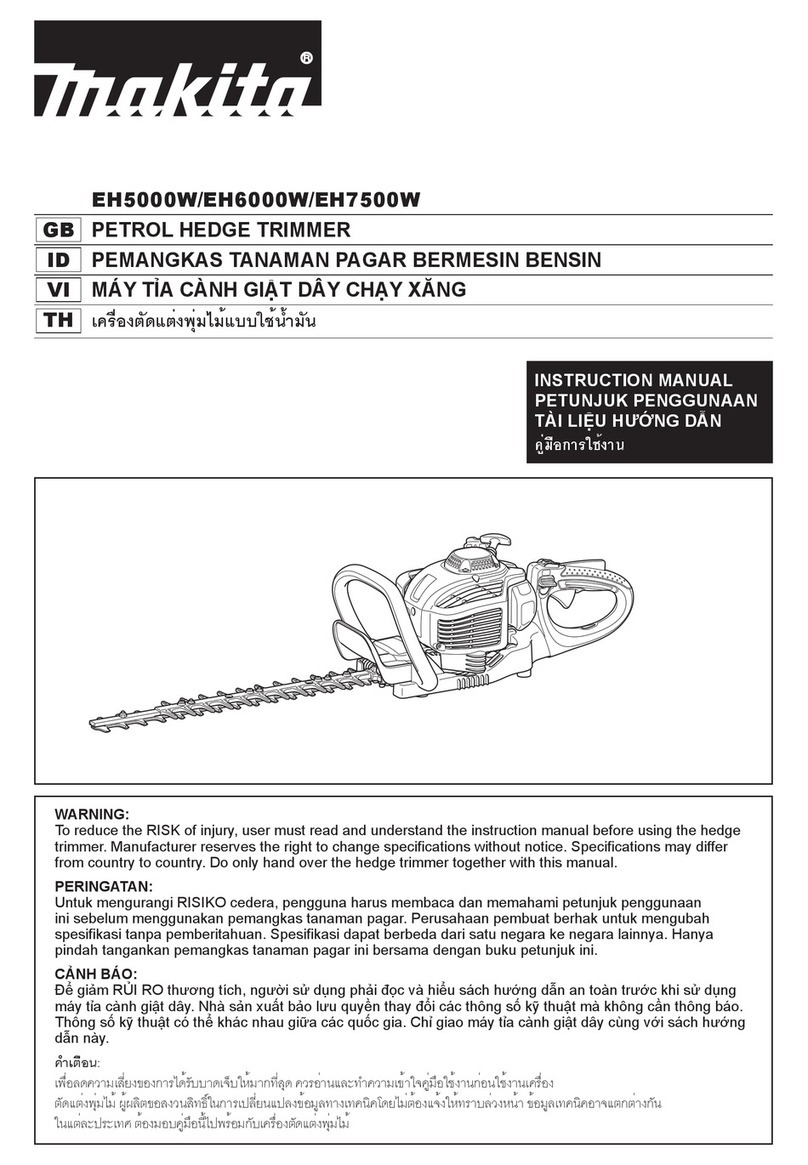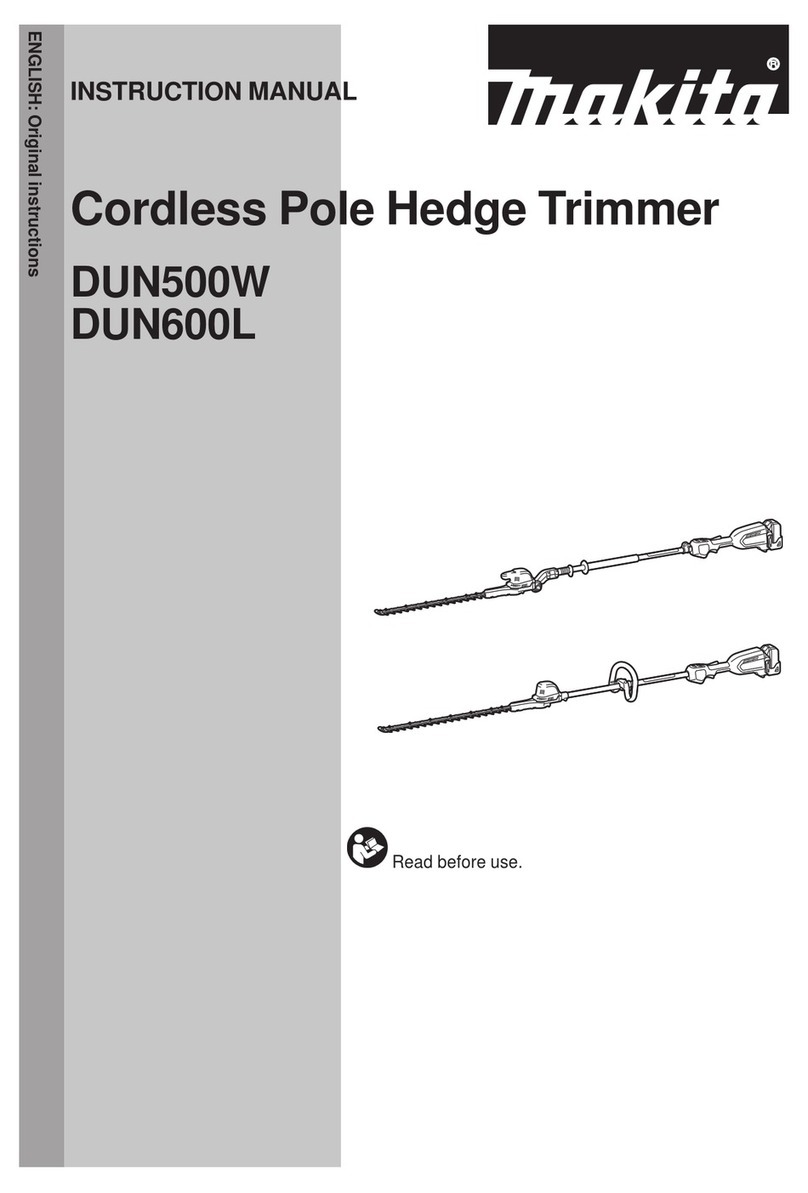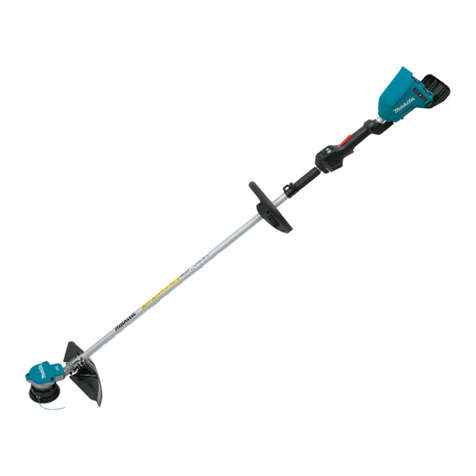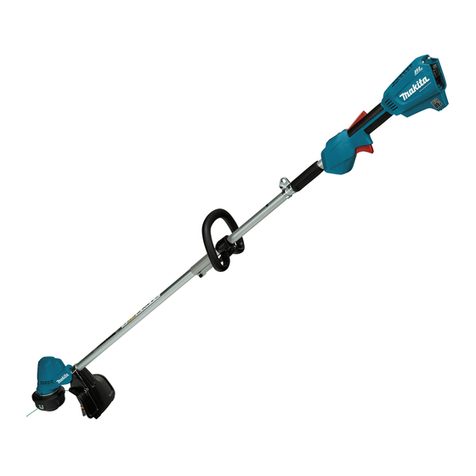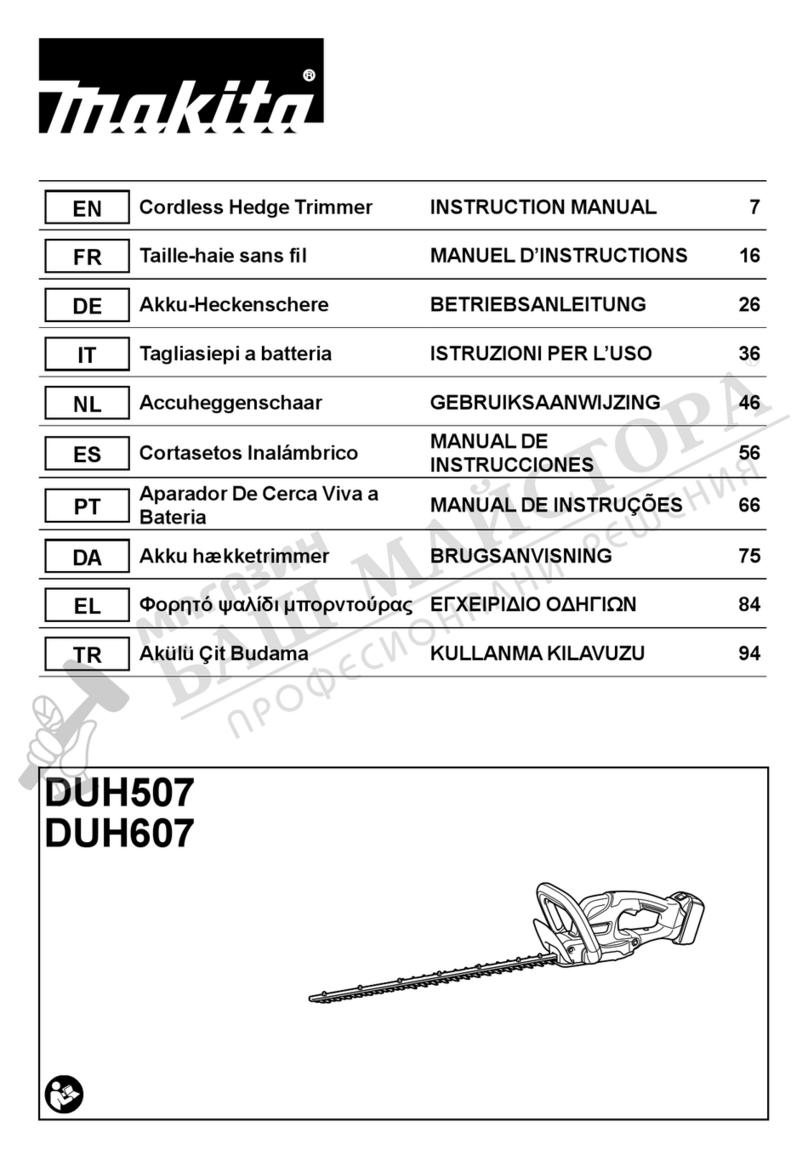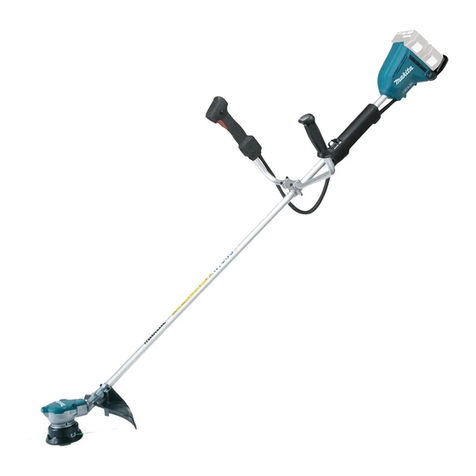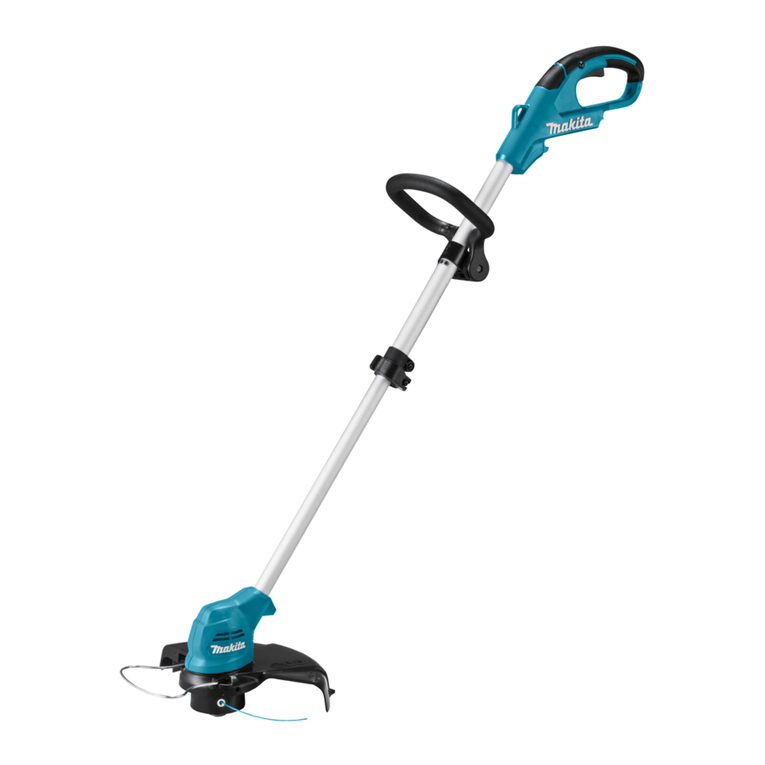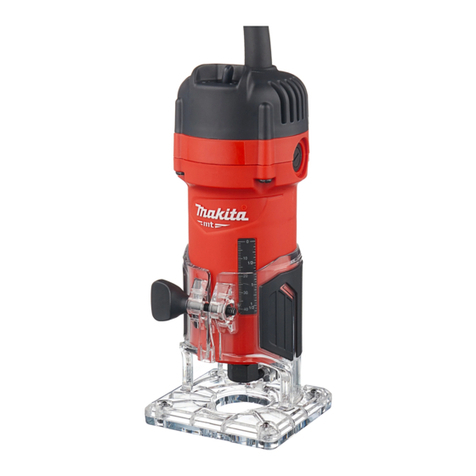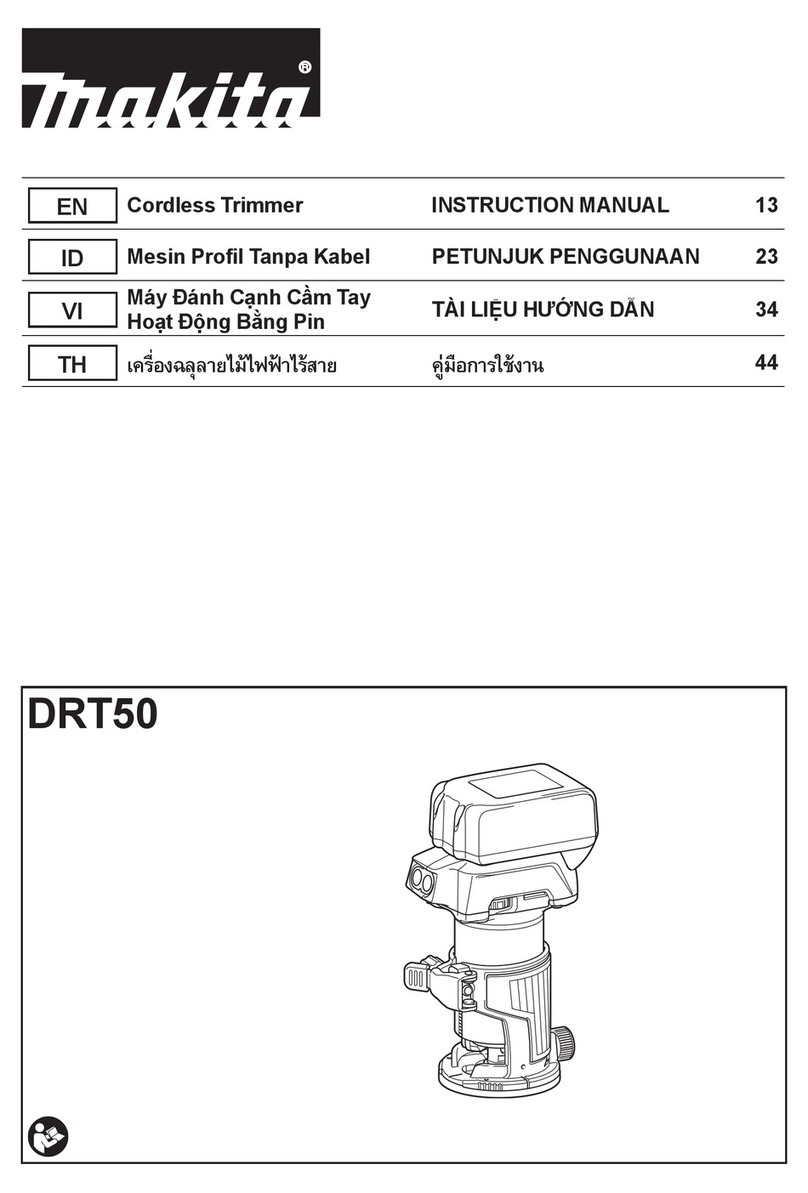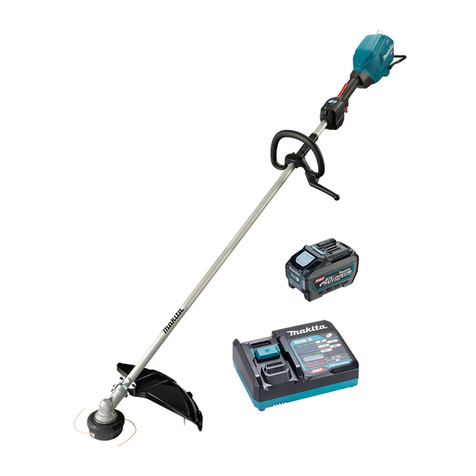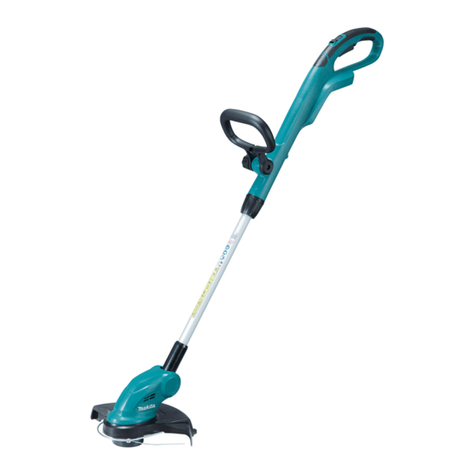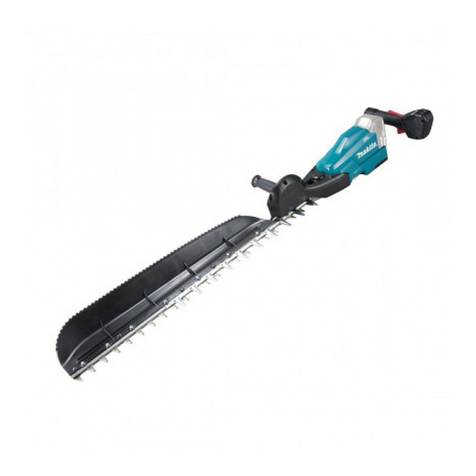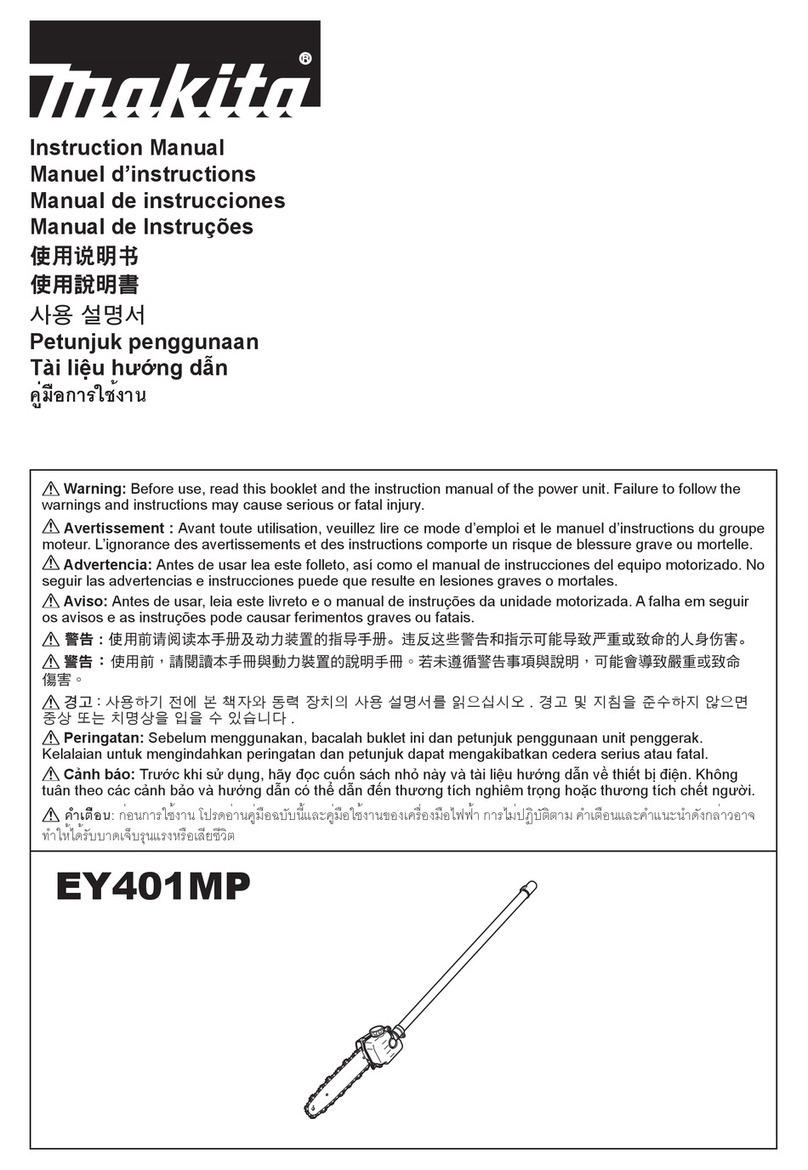
3
General Instructions
– To ensure correct operation, make sure that you read and fully understand this
instruction manual to familiarise yourself with how to use the brush cutter/
string trimmer. Using this equipment without understanding how to operate it
correctly may result in serious injury to yourself or others.
– Only lend the brush cutter/string trimmer to people who have proved
experienced with brush cutter/string trimmers. Always lend them this
instruction manual at the same time.
– If this is your first time using an engine powered cutter, consult your dealer for
basic instructions.
– Children and young persons aged under 18 years must not be allowed to
operate the brush cutter/string trimmer. Persons over the age of 16 years may
use the device for training purposes, only whilst under supervision of a
qualified trainer.
– Use brush cutter/string trimmers with the utmost care and attention.
– Only operate the brush cutter/string trimmer if you are in good physical
condition. Perform all work calmly and carefully. Users must accept
responsibility for those around them.
– Never use the brush cutter/string trimmer after consumption of alcohol or
medicines, or if you are feeling tired or ill.
WARNING: This machine produces an electromagnetic field during operation.
This field may under some circumstances interfere with active or passive
medical implants. To reduce the risk of serious or fatal injury, we recommend
persons with medical implants to consult their physician and the medical implant
manufacturer before operating this machine.
Intended use of the equipment
– The brush cutter/string trimmer is only intended for cutting grass, weeds, bush
and other such undergrowth, and should not be used for any other purpose
such as edging or hedge cutting as this may cause injury.
Personal protective equipment
– Always wear clothing that is both functional and appropriate to your work, i.e.
tight-fitting, but not so tight as to cause uncomfortable movement. Do not wear
either jewelry or clothing which could become entangled with bushes or
shrubs.
– In order to avoid head, eye, hand, or foot injuries, as well as to protect your
hearing during operation, the following protective equipment and protective
clothing must be used while using the brush cutter/string trimmer.
– Always wear a helmet where there is a risk of falling objects. The protective
helmet (1) is to be checked at regular intervals for damage and is to be
replaced at the latest after 5 years. Use only approved protective helmets.
– The visor (2) of the helmet (or alternatively goggles) protects the face from
flying debris and stones. During operation of the brush cutter/string trimmer,
always wear goggles or a visor to prevent eye injuries.
– Wear adequate noise protection equipment to avoid hearing impairment (ear
muffs (3), ear plugs etc.).
– Work overalls (4) protect against flying stones and debris.
We strongly recommend that you wear work overalls.
– Special gloves (5) made of thick leather are part of the prescribed equipment
and must always be worn during operation of the brush cutter/string trimmer.
– When using the brush cutter/string trimmer, always wear sturdy shoes (6) with
a non-slip sole. Such shoes protect against injuries and ensure good footing.
Residual risks
– Even when the machine is used as prescribed it is not possible to eliminate all
residual risk factors. The following hazards may arise in connection with the
machine’s construction and design:
1. Damage to lungs if an effective dust mask is not worn.
2. Damage to hearing if effective hearing protection is not worn.
3. Damages to health resulting from vibration emission if the machine is being
used over longer period of time or not adequately managed and properly
maintained.
Starting the brush cutter
– Make sure that there are no children or other people within a working range of
15 meters (50ft), also pay attention to any animals in the working vicinity.
– Before use, always check that the brush cutter/string trimmer is safe for
operation:
Check that the cutting tool is secure, that the control lever can be operated
easily, and that the control lever lock is functioning correctly.
– Rotation of the cutting tool during idling is prohibited. Check with your dealer if
you think the equipment may need adjusting. Check to make sure that the
handles are clean and dry, and that the start/stop switch is functioning
correctly.
Safety instructions
Diagram
15 meters
(1)
(3)
(2)
(4)
(5) (6)
